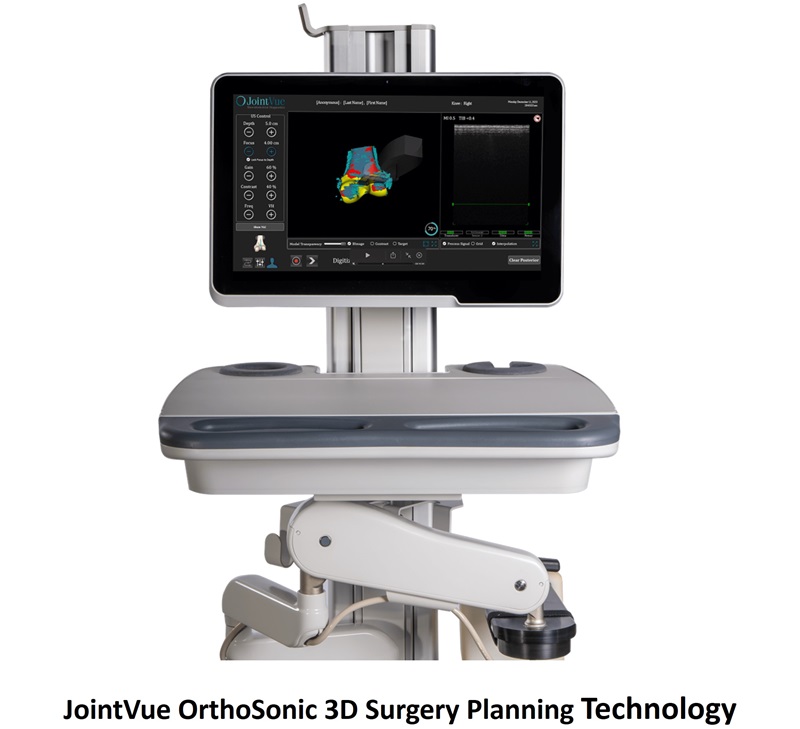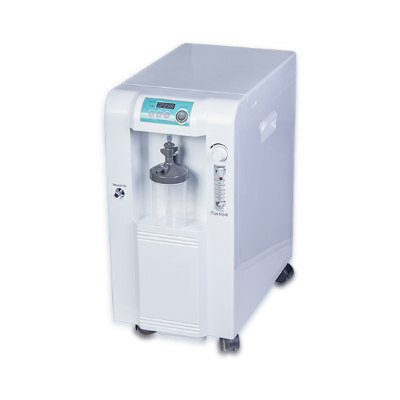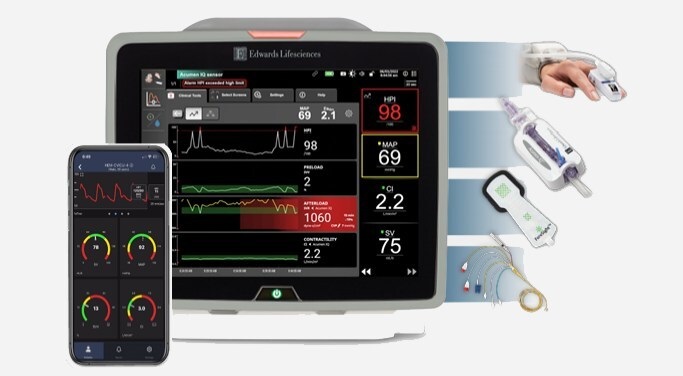Most Britons Do Not Trust Their Local Doctor
|
By HospiMedica International staff writers Posted on 17 Jan 2013 |
Nearly two-thirds of Britons no longer trust their doctor, while and one in 10 rush to the emergency room (ER) for treatment when a visit to the doctor would suffice, according to a recent survey.
The OnePoll survey by SAS (Cary, NC, USA), a world leader in business analytics software and services, polled 2,000 people on their healthcare perceptions. The results showed that Britons have to wait days for appointments, perceiving that doctors are often trying to rush them out of the surgery, which has resulted in nearly a third of the public now having a “hospital only” mentality, feeling they would get more attention if they went straight to ER, no matter what the ailment. A similar proportion stated they have to wait too long to see a doctor unless they claimed the matter was an emergency.
For nonurgent ailments, most Britons are prepared to wait up to five days for a doctor's appointment, but respondents said the average wait was up to two weeks. The survey also showed the influence the Internet is having on self-diagnosis. Over 40% use Internet searches to first try and establish what it is wrong before contacting their doctor or going to the ER. However, 11% of those surveyed said they called an ambulance to take them to an ER when a doctor's appointment would have sufficed, and 35% are not even registered with a general practitioner (GP).
This mindset is particularly strong among 18-24 year olds, where more than a quarter of respondents stated they would rush to ER rather than waiting for a doctor's appointment, with one in five confirming they have called upon ambulances unnecessarily, and two in five yet to register with their local GP. The most common ailments Britons would rush straight to the ER for, rather than going to the doctor, include broken limbs (68%), anything unbearable (27%), twisted wrists or ankles (23%), unusual skin rashes (14%), and high temperature (6%).
“Britons are experiencing up to a two-week wait to see a doctor, making patients head to A&E unnecessarily,” said David Downing, director of health at SAS UK. “This is not only contributing to rising admission rates but creating a 'hospital only' mentality in the UK, especially among the younger generation. By harnessing big data through analytics, the health service could identify the underlying factors contributing to higher admission rates, and reveal new insights and patterns to help improve patient service.”
Related Links:
SAS
The OnePoll survey by SAS (Cary, NC, USA), a world leader in business analytics software and services, polled 2,000 people on their healthcare perceptions. The results showed that Britons have to wait days for appointments, perceiving that doctors are often trying to rush them out of the surgery, which has resulted in nearly a third of the public now having a “hospital only” mentality, feeling they would get more attention if they went straight to ER, no matter what the ailment. A similar proportion stated they have to wait too long to see a doctor unless they claimed the matter was an emergency.
For nonurgent ailments, most Britons are prepared to wait up to five days for a doctor's appointment, but respondents said the average wait was up to two weeks. The survey also showed the influence the Internet is having on self-diagnosis. Over 40% use Internet searches to first try and establish what it is wrong before contacting their doctor or going to the ER. However, 11% of those surveyed said they called an ambulance to take them to an ER when a doctor's appointment would have sufficed, and 35% are not even registered with a general practitioner (GP).
This mindset is particularly strong among 18-24 year olds, where more than a quarter of respondents stated they would rush to ER rather than waiting for a doctor's appointment, with one in five confirming they have called upon ambulances unnecessarily, and two in five yet to register with their local GP. The most common ailments Britons would rush straight to the ER for, rather than going to the doctor, include broken limbs (68%), anything unbearable (27%), twisted wrists or ankles (23%), unusual skin rashes (14%), and high temperature (6%).
“Britons are experiencing up to a two-week wait to see a doctor, making patients head to A&E unnecessarily,” said David Downing, director of health at SAS UK. “This is not only contributing to rising admission rates but creating a 'hospital only' mentality in the UK, especially among the younger generation. By harnessing big data through analytics, the health service could identify the underlying factors contributing to higher admission rates, and reveal new insights and patterns to help improve patient service.”
Related Links:
SAS
Latest Patient Care News
- Portable Biosensor Platform to Reduce Hospital-Acquired Infections
- First-Of-Its-Kind Portable Germicidal Light Technology Disinfects High-Touch Clinical Surfaces in Seconds
- Surgical Capacity Optimization Solution Helps Hospitals Boost OR Utilization

- Game-Changing Innovation in Surgical Instrument Sterilization Significantly Improves OR Throughput
- Next Gen ICU Bed to Help Address Complex Critical Care Needs
- Groundbreaking AI-Powered UV-C Disinfection Technology Redefines Infection Control Landscape
- Clean Hospitals Can Reduce Antibiotic Resistance, Save Lives
- Smart Hospital Beds Improve Accuracy of Medical Diagnosis
- New Fast Endoscope Drying System Improves Productivity and Traceability
- World’s First Automated Endoscope Cleaner Fights Antimicrobial Resistance
- Portable High-Capacity Digital Stretcher Scales Provide Precision Weighing for Patients in ER
- Portable Clinical Scale with Remote Indicator Allows for Flexible Patient Weighing Use
- Innovative and Highly Customizable Medical Carts Offer Unlimited Configuration Possibilities
- Biomolecular Wound Healing Film Adheres to Sensitive Tissue and Releases Active Ingredients
- Wearable Health Tech Could Measure Gases Released From Skin to Monitor Metabolic Diseases
- Wearable Cardioverter Defibrillator System Protects Patients at Risk of Sudden Cardiac Arrest
Channels
Critical Care
view channel_1.jpg)
Cutting-Edge Bioelectronic Device Offers Drug-Free Approach to Managing Bacterial Infections
Antibiotic-resistant infections pose an increasing threat to patient safety and healthcare systems worldwide. Recent estimates indicate that drug-resistant infections may rise by 70% by 2050, highlighting... Read more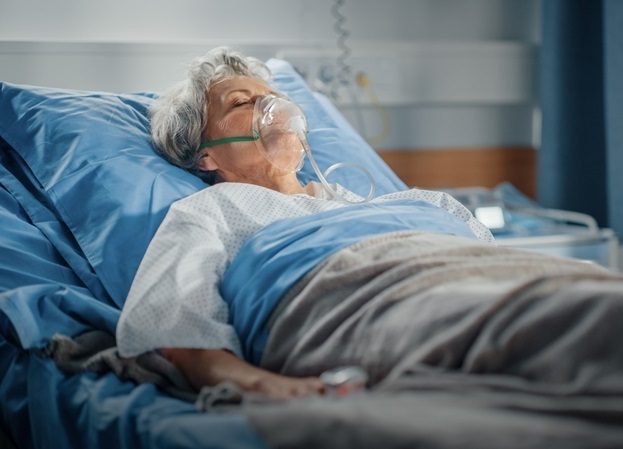
Sophisticated Machine-Learning Approach Uses Patient EHRs to Predict Pneumonia Outcomes
Pneumonia, an infection that results in difficulty breathing due to fluid accumulation in the lungs, is one of the leading causes of death worldwide. This condition is particularly challenging to treat... Read more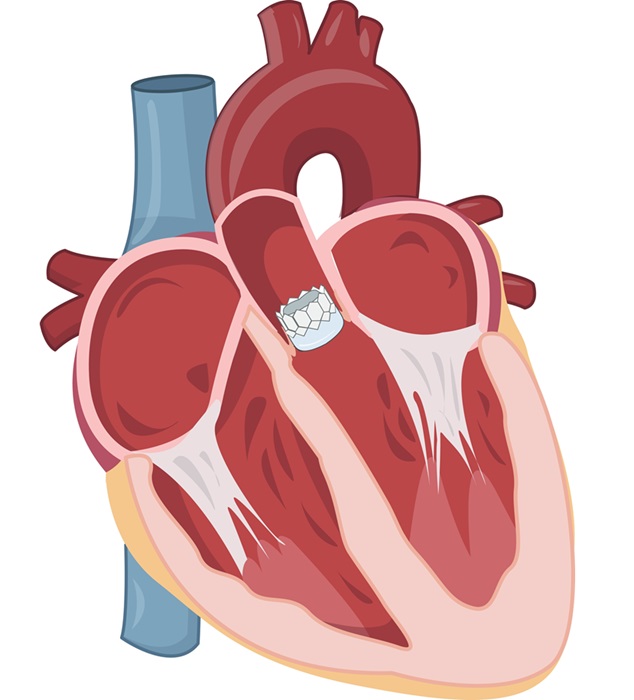
Early TAVR Benefits Patients with Asymptomatic Severe Aortic Stenosis
For patients with asymptomatic severe aortic stenosis (AS) and preserved left-ventricular ejection fraction, current guidelines recommend clinical surveillance every six to twelve months.... Read more
First-Of-Its-Kind Experimental Therapy Enhances Tissue Repair After Heart Attack
Cardiovascular disease remains the leading cause of death worldwide, accounting for one-third of all annual fatalities. Following a heart attack, the heart's natural regenerative ability is limited, resulting... Read moreSurgical Techniques
view channel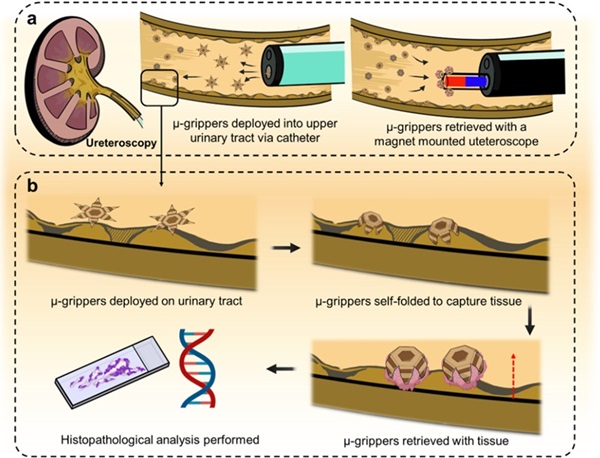
Microgrippers For Miniature Biopsies to Create New Cancer Diagnostic Screening Paradigm
The standard diagnosis of upper urinary tract cancers typically involves the removal of suspicious tissue using forceps, a procedure that is technically challenging and samples only a single region of the organ.... Read moreMiniature Soft Lithium-Ion Battery Could Be Used as Defibrillator During Surgery
The development of tiny smart devices, measuring just a few cubic millimeters, requires equally miniature power sources. For minimally invasive biomedical devices that interact with biological tissues,... Read more.jpg)
TAVI Procedure Supported by Radial Artery Access Reduces Bleeding Complications
The TAVI procedure, or Transcatheter Aortic Valve Implantation, is a minimally invasive technique in which a new aortic valve is inserted through a femoral artery to replace a narrowed old valve.... Read more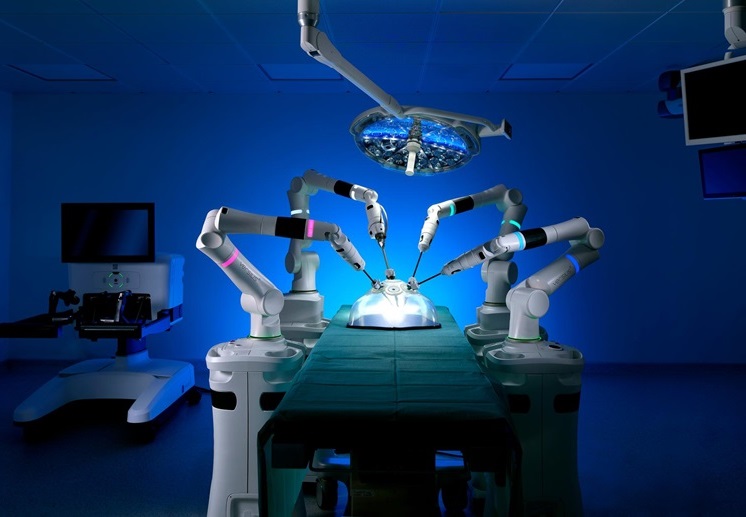
Portable Surgical Robot Seamlessly Integrates into Any OR for Performing Cholecystectomy Procedures
The United States represents a significant market with a strong demand for a flexible surgical robotic system applicable across various care settings. However, there has been a lack of sufficient options... Read moreHealth IT
view channel
Machine Learning Model Improves Mortality Risk Prediction for Cardiac Surgery Patients
Machine learning algorithms have been deployed to create predictive models in various medical fields, with some demonstrating improved outcomes compared to their standard-of-care counterparts.... Read more
Strategic Collaboration to Develop and Integrate Generative AI into Healthcare
Top industry experts have underscored the immediate requirement for healthcare systems and hospitals to respond to severe cost and margin pressures. Close to half of U.S. hospitals ended 2022 in the red... Read more
AI-Enabled Operating Rooms Solution Helps Hospitals Maximize Utilization and Unlock Capacity
For healthcare organizations, optimizing operating room (OR) utilization during prime time hours is a complex challenge. Surgeons and clinics face difficulties in finding available slots for booking cases,... Read more
AI Predicts Pancreatic Cancer Three Years before Diagnosis from Patients’ Medical Records
Screening for common cancers like breast, cervix, and prostate cancer relies on relatively simple and highly effective techniques, such as mammograms, Pap smears, and blood tests. These methods have revolutionized... Read morePoint of Care
view channel
Handheld, Sound-Based Diagnostic System Delivers Bedside Blood Test Results in An Hour
Patients who go to a doctor for a blood test often have to contend with a needle and syringe, followed by a long wait—sometimes hours or even days—for lab results. Scientists have been working hard to... Read more
Smartphone-Enabled, Paper-Based Quantitative Diagnostic Platform Transforms POC Testing
Point-of-care diagnostics are crucial for public health, offering rapid, on-site testing that enables prompt diagnosis and treatment. This is especially valuable in remote or underserved regions where... Read moreBusiness
view channel
Hologic Acquires Gynesonics to Strengthen Existing Gynecological Surgical Business
Hologic (Marlborough, MA, USA) has signed a definitive agreement to acquire Gynesonics (Redwood City, CA, USA) for approximately USD 350 million, subject to working capital and other customary closing adjustments.... Read more